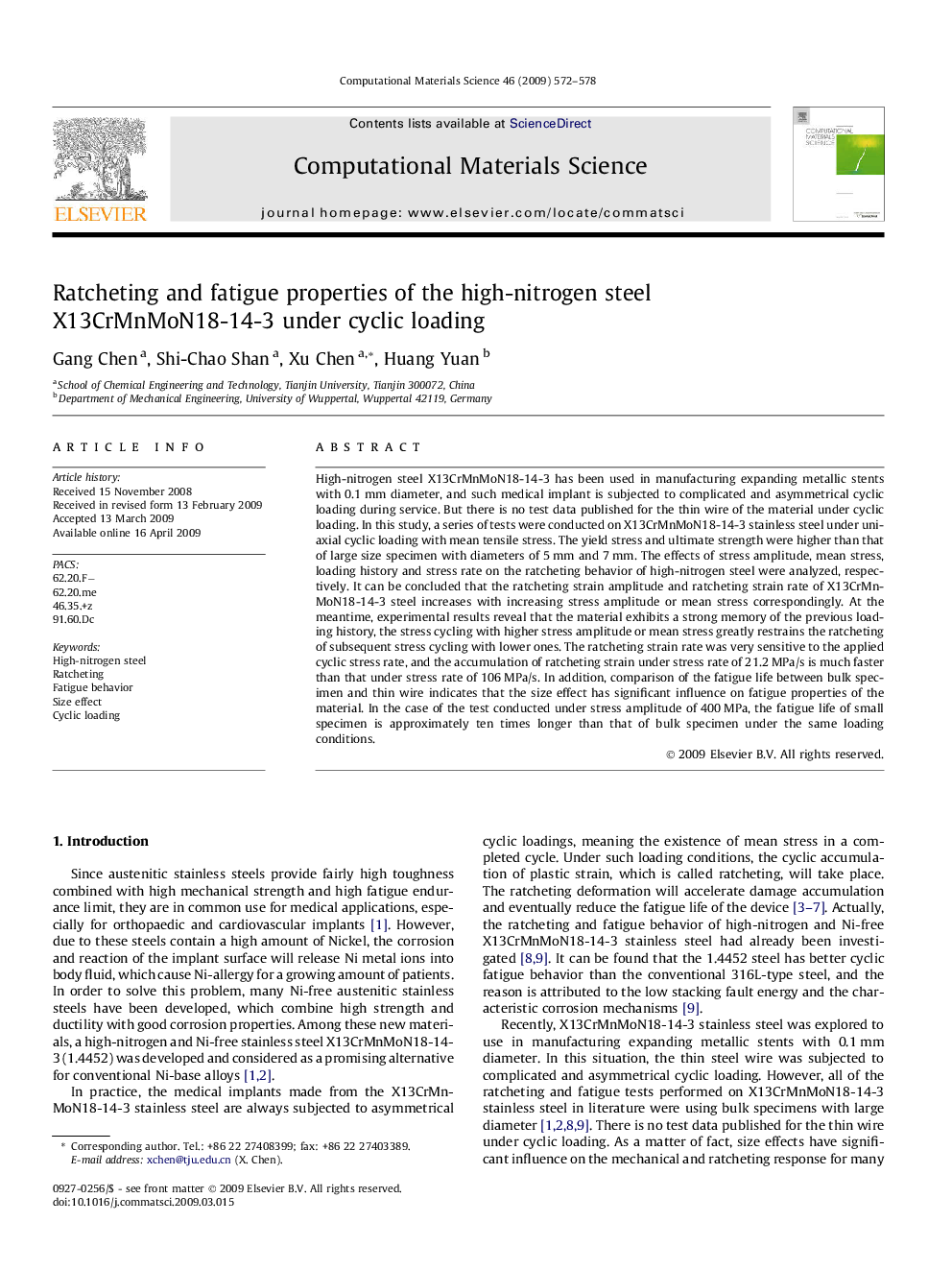| Article ID | Journal | Published Year | Pages | File Type |
|---|---|---|---|---|
| 1563077 | Computational Materials Science | 2009 | 7 Pages |
High-nitrogen steel X13CrMnMoN18-14-3 has been used in manufacturing expanding metallic stents with 0.1 mm diameter, and such medical implant is subjected to complicated and asymmetrical cyclic loading during service. But there is no test data published for the thin wire of the material under cyclic loading. In this study, a series of tests were conducted on X13CrMnMoN18-14-3 stainless steel under uniaxial cyclic loading with mean tensile stress. The yield stress and ultimate strength were higher than that of large size specimen with diameters of 5 mm and 7 mm. The effects of stress amplitude, mean stress, loading history and stress rate on the ratcheting behavior of high-nitrogen steel were analyzed, respectively. It can be concluded that the ratcheting strain amplitude and ratcheting strain rate of X13CrMnMoN18-14-3 steel increases with increasing stress amplitude or mean stress correspondingly. At the meantime, experimental results reveal that the material exhibits a strong memory of the previous loading history, the stress cycling with higher stress amplitude or mean stress greatly restrains the ratcheting of subsequent stress cycling with lower ones. The ratcheting strain rate was very sensitive to the applied cyclic stress rate, and the accumulation of ratcheting strain under stress rate of 21.2 MPa/s is much faster than that under stress rate of 106 MPa/s. In addition, comparison of the fatigue life between bulk specimen and thin wire indicates that the size effect has significant influence on fatigue properties of the material. In the case of the test conducted under stress amplitude of 400 MPa, the fatigue life of small specimen is approximately ten times longer than that of bulk specimen under the same loading conditions.
